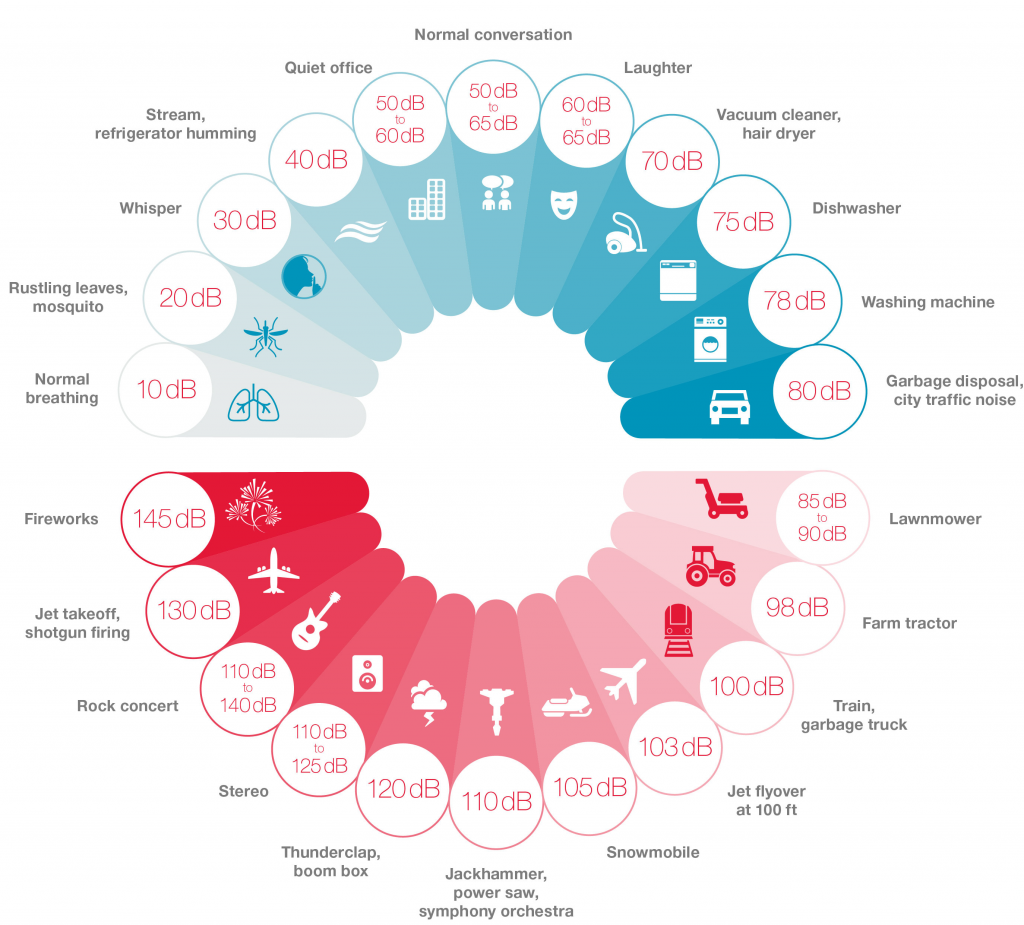There are many aspects of air purifiers that are very important that you have to take into consideration before making a purchase. One that is often overlooked or not understood completely is air purifier decibel ratings. In other words, how loud is the device? This might not seem such a big deal at first, but it is more important than we think. In this post, I am going to give you all the necessary information regarding this topic. Let’s start.
What are decibels ?
Simply put, decibel is a unit which we use to measure sound. Sometimes we write decibel as “dB” and the higher the number, the louder the sound. We measure sound by specialized devices called decibel meters. And just as you would expect from our modern times, you can also find decent apps to measure sound strength with your smartphone!
To have a better idea of the scale and examples of different sounds in decibels, refer to this very informative graph below.

Source: earq.com
If you take a look at the graph you can see that the numbers (called levels) increases mostly by 10. What is interesting is that an increase of 10 means that the sound is 10x more powerful or intense! In other words an air purifier marked as 40 dB is ten times louder than a 30 dB air purifier!
Air Purifier Decibel Ratings – how much is too much?
Most air purifiers list their operating noise between 20-60 decibels (db). While it might not seem such a big difference in the grand scheme of things… it is. There is quite a difference between an air purifier that has 30 dB noise or 50 dB. First you need to take into consideration fan speed. Many air purifiers come with a control panel that allows you to change fan speed. The higher the fan speed, the louder the noise. So an increase in fan speed = more decibels (dB) = louder device. Therefore it is important that you take a look at the range of decibels an air purifier lists in the product description.
So how much is too much? This depends on the location of your air purifier. In other words, where will you put it – kitchen, hallway, living room, bedroom, or somewhere else? Obviously the biggest concern here is the bedroom. Most people that buy their first air purifier intend to use it in their bedroom or living room. This makes sense, since these are usually places where we spend most of our days, so want these rooms to have priority when it comes to clean air. As a rule of thumb, people have trouble falling asleep if there is any noise above 45 dB (decibels) present around them For this reason, I recommend taking an air purifier that produces 40 dB of noise, at most. Anything above that and you risk an air purifier waking you up in the middile of the night.
As for living room – it depends. Again, I would go below 40 dB, when you use your living room for some quiet activities such as reading, meditation, studying or something similar where you need a quiet environment. For other rooms you can go higher than 40 or 50 dB as the noise is not as noticeable as it would otherwise be.
Some additional tips
Furnishings such as carpets and curtains actually absorb some noise and lessen its impact. An empty room with wooden floors and a high ceiling would not absorb any sound, so your air purifier would feel louder.
Many air purifiers come with fan speed settings, which can lower the noise. But be careful – using such settings means that you sacrifice some of the air cleaning effectiveness for lower noise. A lower fan speed will reduce noise, but at the same time will not circulate clean air as fast as it would on higher settings.
Always check if there is a label regarding noise levels on an air purifier. Manufacturers are not obligated to disclose this information. So if you find an air purifier like that – chances are that it is very loud, which why this information was no disclosed in the first place. Always take a look at product specification, namely how much noise it emits!